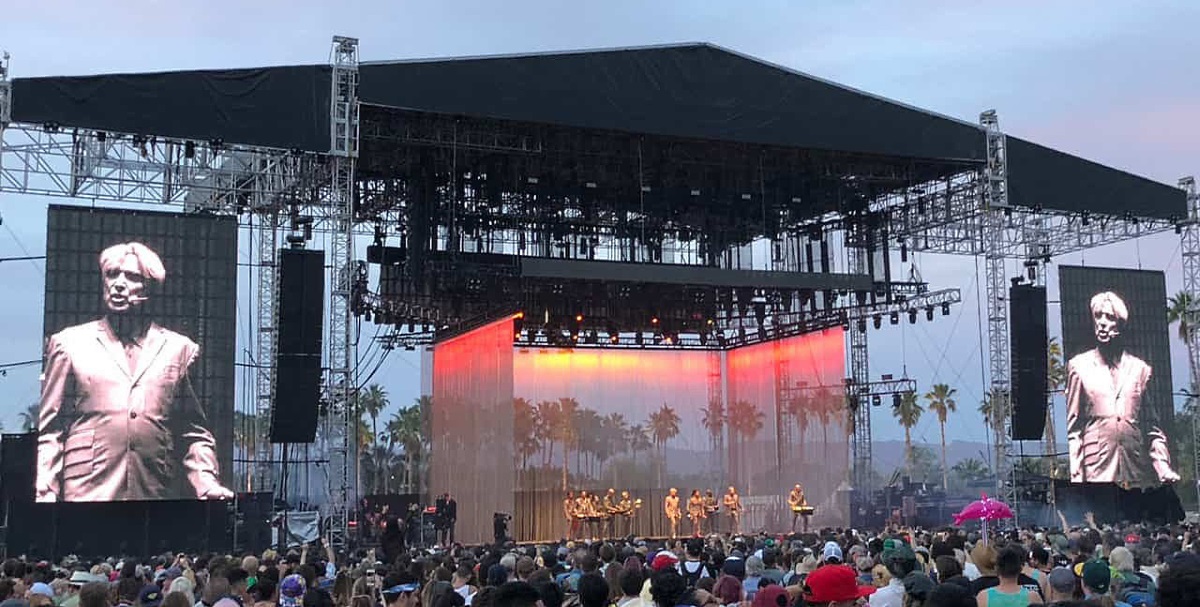
The FOH desk was a DiGiCo SD10 joined by an outboard Waves system (server, Mac Mini and a touchscreen), with Keppler noting that he’s a big fan of Waves plugins.
“Waves processing has saved me on this tour, no doubt about it. The vocal mics have a lot of spill and much of the drums and percussion are quite loud on stage. The Waves F6 dynamic EQ has six independently keyable bands; I have five singers, all on headset mics. I literally woke up at 3 am one night during rehearsals and thought, ‘what if I were to land each vocal on the desk twice and use the second channel as a filtered side chain to send to the F6?’
“The keyed input on the high-shelf band (acting as an expander of sorts) receives the filtered channel’s send (focused on the vocal range, 300 Hz to 1.5 kHz) on the respective vocalist’s F6 to deal with the spill (from about 800Hz to 15kHz) It works really well.”
Tricks Of The Trade
Heading back to the stage, the home of his DiGiCo SD5 console for monitors and some “bits and pieces” from a Universal Audio real-time rack, Chadwick let us in on some of his trade secrets with respect to working with wireless.
“Everything lives between 470 and 626 MHz,” he explains. “Frequency coordination is achieved via Shure Wireless Workbench 6 software and a Shure AXT600 spectrum manager. This takes between 15 and 20 minutes per day, depending on how hostile the RF environment each day. It probably takes a further 15 to 20 minutes to change all of the batteries and sync up the 66 packs we use each day.
“I specified the RF system. The number of Axient D channels needed was just a function of how many inputs are necessary for the show. Seeing as we’re traveling worldwide with the same system and the challenges that comes with, I was very keen to carry spare capacity across two frequency ranges for the IEMs – not to mention the ever-shrinking spectrum available to touring productions these days and the ability to be frequency agile for festival shows.

“I have assistance from Jamie Nelson, who deals with the lion’s share of the RF system day to day, and it’s a team effort to do the RF coordination, change out the batteries, mount the transmitters on drums, and walk and distribute IEMs. Jamie monitors the RF system via Wireless Workbench during the show while I’m pushing a fader every now and again.”
He also notes that the sheer number of wireless transmitters and bodypacks on the tour raised another issue: “We couldn’t use that many AA batteries per day and have a clear conscience about the environmental impact we would have, so we’re using Shure’s rechargeable battery system. We have a 72-bay recharging rack that pulls 16 amps when running at full tilt! By the time the tour is over we will have saved around 21,000 AA batteries from being thrown away.
“[The recharge system] is a really good solution, and the time-remaining indicator on the receivers is very accurate. It gave us the confidence to do seven- to eight-hour rehearsal days without a precautionary battery change during the lunch break.”
By all accounts, the America Utopia tour served as a technological marvel and delivered delightful audio experiences for the concertgoers. One jaded long-time audio professional was heard to say, after a festival appearance last April, “In my 20-plus years at this fest, that set was the best this stage ever sounded.”
